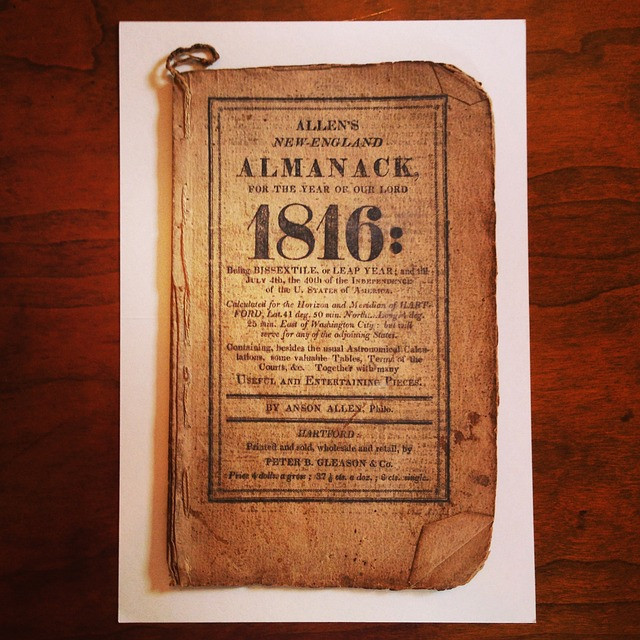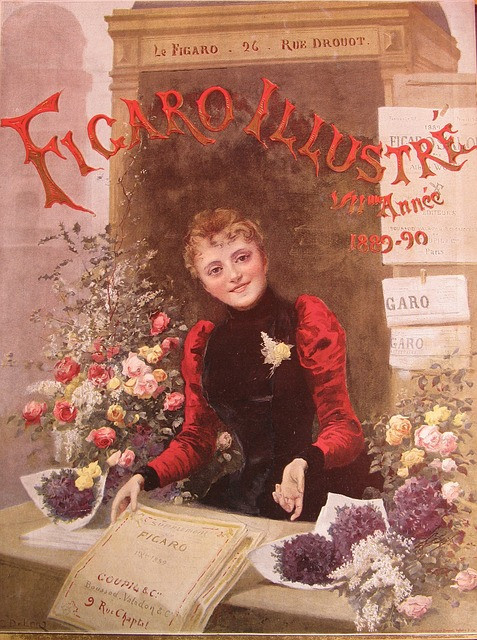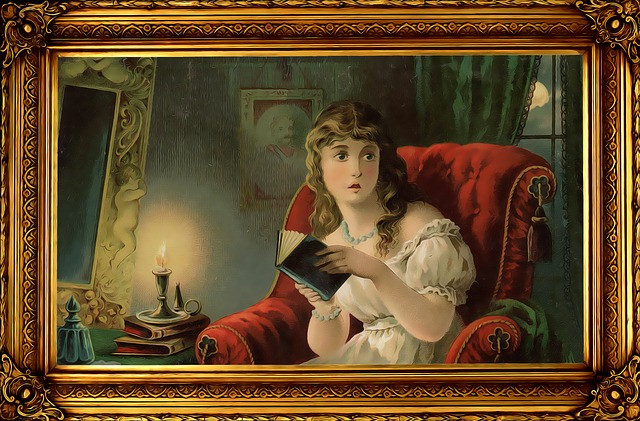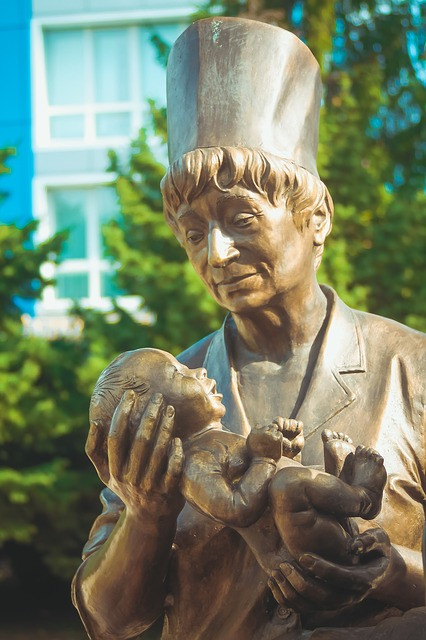
After the printing press became prevalent in Europe, early publishers began to conceptualize the magazine. Forerunners of the familiar modern magazine first appeared in the form of brochures,
pamphlets, and almanacs.
A gradual shift then occurred as publishers sought regular readers with specific interests. But the early magazine was unlike any other previous publication. It was not enough of a news source to be a newspaper, but it could not be considered pleasure reading either.
WOMEN
With the arrival of the 18th century, came an increase in literacy. Women, who enjoyed a considerable rise in literacy rates, began reading in record numbers.
This growth affected the literary world as a whole, inspiring a large number of female writers to publish novels for female readers.
The influx of female readers helped magazines flourish as more women sought out
the publications as a source of knowledge and entertainment. In fact, many magazines jumped at the chance to reach out to women.
EARLY VERSION
 Much as in newspaper publication, Great Britain closely followed Continental Europe’s lead in producing magazines. During the early 18th century, three major influential magazines were published regularly in Great Britain: Daniel Defoe’s Review, Sir Richard Steele’s the Tatler, and Joseph Addison and Steele’s The Spectator.
Much as in newspaper publication, Great Britain closely followed Continental Europe’s lead in producing magazines. During the early 18th century, three major influential magazines were published regularly in Great Britain: Daniel Defoe’s Review, Sir Richard Steele’s the Tatler, and Joseph Addison and Steele’s The Spectator.
While they were supplied as frequently as newspapers, their content was closer to that of magazines. The Review focused primarily on domestic and foreign affairs. Both Tatler and Spectator emphasized living and culture and frequently used humor to promote virtuous behavior.
AMERICA
By the end of the 1700s, more than 100 magazines had appeared in the United States. Despite this, many recorded low circulation rates and were considered highbrow.
This changed during the 1830s with a decline in the cost of printing. No longer were magazines focused on the elite class.
Publishers took advantage of their freshly expanded audience and began offering family magazines, children’s magazines, and women’s magazines.
WEEKLY
The first truly successful mass circulation magazine in the United States was The Saturday Evening Post. This weekly magazine first began printing in 1821 and remained in regular print production until 1969. However, in 1971 a new owner remodeled the magazine to focus on health and medical breakthroughs.
From the time of its first publication The Saturday Evening Post quickly grew in popularity. Widely recognized for transforming the look of the magazine, the publication was the first to put artwork on its cover, a decision that The Saturday Evening Post has said “connected readers intimately with the magazine as a whole.”
ADVERTISING
By 1900, advertising had become a crucial component of the magazine business. In the early days of the industry, many publications attempted to keep advertisements out of their issues.
However, once circulation increased, advertisers sought out space in magazines to reach the larger audience.
Magazines responded by raising advertising rates, increasing their profitability. By the turn of the 20th century, advertising had become the norm in magazines.
PRICE
Most early US publications cost 25 or 35 cents per issue, limiting readership to the relative few who could afford them. This all changed in 1893 when Samuel Sidney McClure began selling McClure’s Magazine, originally a literary and political magazine, at the bargain price of only 15 cents per issue.
Soon, Cosmopolitan (founded 1886) began selling for 12.5 cents, while Munsey Magazine (1886–1929) sold for only 10 cents. All three of these periodicals were widely successful. For the first time, magazines could be sold for less than they cost to produce. Because of greater circulation, publications could charge more for advertising space and decrease the cost to the customer.
TIME
As publishers became interested in succinctly presenting the fresh increase of worldwide information that technology made available, during the late 19th and early 20th centuries, they designed the news magazine.
In 1923, Time, became the first news magazine that focused on world news. Time first began publication with the proposition that “people are uninformed because no publication has adapted itself to the time which busy men are able to spend, simply keeping informed.”
NEWS MAGAZINES
Time magazine’s signature style of well researched news presented in a succinct manner, contributed greatly to its eventual success. Several other news magazines came onto the market during this era as well.
Business Week was founded in 1929 with a focus on the global market. Forbes, currently one of the most popular financial magazines, began printing in 1917 as a biweekly publication.
In 1933, a former Time foreign editor founded Newsweek, which now has a circulation of nearly 4 million readers. Today, Newsweek and Time continue to compete with each other, furthering a trend that began in the early years of Newsweek.
Photo-journalism
also became popular during the early 20th century. Although magazines had been running illustrations since the 19th century, as photography grew in popularity, so did picture magazines.
The most influential picture magazine was Henry Luce’s Life. In Luce’s words, the publication aimed “to see life; to see the world; to witness great events; to watch the faces of the poor and the gestures of the proud; to see strange things.”
LIFE AND LOOK
The opening photograph depicted an obstetrician holding a newborn baby with the caption “Life begins”.
While Life was the most influential picture magazine, it was certainly not the only photo-centric publication. Popular biweekly picture magazine Look, printed between 1937 and 1971, competed with Life, by reaching out to a larger audience.
Although Look offered Life stiff competition during their almost identical print runs, the latter magazine is widely considered to have a greater legacy.
WRITERS
Magazines offered a place not only for advertisers but also for authors and poets to reach a large audience. Many publications regularly hired both new and established authors to write stories. As circulation increased, so did the desire for these authors to publish their work.
Literary magazines enjoyed a boom during the 19th century, publishing some of the period’s most important fiction. Nearly every important American writer contributed to literary magazines; for example, Edgar Allan Poe, Mark Twain, Walt Whitman, and Ernest Hemingway all published in periodicals throughout their careers.
LITERATURE
Even writers working outside the country such as Ezra Pound and James Joyce, sought out U.S. magazines to publish works that had been banned elsewhere.
Just as magazines offered authors a chance to display their writing to a large audience, they also allowed readers a taste of available literature.
Even today, magazines print portions of books, which give readers a preview of the complete text. Portions of literary classics including Uncle Tom’s Cabin, Walden, Moby-Dick, Tom Sawyer, Huckleberry Finn, and Ulysses all made their debuts in magazines.
CULTURE
The opportunity to publish in magazines has been invaluable for authors, but literary publications have also proved essential for the development of American culture.
In publishing literary texts, journals have promoted now-classic stories, like Edgar Rice Burroughs’s Tarzan of the Apes, John Hersey’s Hiroshima, and Ernest Hemingway’s The Old Man and the Sea, that have defined American literary history and have shaped the U.S. story.
PULP FICITION
During the late 1800s, a new type of magazine was established: the pulp magazine, an all-fiction publication named for its rough wood-pulp paper.
At the time, dime novels did not qualify for the same inexpensive postal rates that magazines did, but the pulps did.
Suddenly, individuals had the opportunity to read popular genre fiction in these cheap magazines, like Adventure, Horror Stories, Startling Stories, and Weird Tales.
NEW GENERE
Commonly acknowledged to be the invention of Frank Munsey, the pulps got their start as adventure magazines, but they eventually diverged into several categories such as love, detective, and western.
The fiction stories did remarkably well until the mid-1930s, when newspaper comics first offered competition by printing collections on the same pulp paper.
In 1937, however, the two genres collided with Detective Comics (where Batman made his first appearance), and the industry experienced a major boom. Although intended for children, the violent, horror-soaked comics drew a large adult audience.
REGULATION A
The graphic content of the pulp strips caused a stir, with the public divided on the nature of this new media. Defenders of the comics called them harmless, while critics thought they would provoke people to mimic the violent subject matter.
Just as legislators struggle today with debates over censorship of television,
music, and the Internet, they did so with pulp comics as well.
In response to the controversy, the Association of Comics Magazine Publishers established a Publishers Code in 1948 to regulate the content of pulp comics.
REGULATION B
The Publishers Code was not well enforced, however. Many publishers chose to ignore the code, and thus the controversy continued to rage.
When Senate hearings raised the threat of government regulation in 1954, the pulp comics industry opted for self-censorship and as a result, the much stricter Comics Code Authority was established to control what material reached consumers.
In spite of the controversy surrounding the magazines, the industry flourished, and eventually new forms of pulp magazines emerged.
CIRCULATION
The late 19th century brought with it an increase in mass circulation. This meant that magazines that had once targeted only a small part of the country, suddenly began reaching a nationwide audience.
In addition to the benefit of increased magazine revenue, this shift in circulation caused an interesting phenomenon: the introduction of national trends.
For the first time in US history, mass circulation allowed news, stories, consumer goods, and fashions to be diffused and advertised to widespread, rather than regional, audiences.
INFLUENCE
Mass circulation of magazines united the country, as diverse consumers read the same stories and saw the same advertisements.
Due to this growth in readership, advertisements became increasingly vital to the magazine industry. Advertisers sought to reach a large audience, and magazines willingly afforded them that opportunity, selling advertising space at higher rates. That national market was an entirely new one for publishers and advertisers.
Market research had become the norm for periodicals, as magazines and advertisers worked to better understand what readers wanted. However, many publishers instead embraced the potential of magazines to simply tell people what they want or need, solidifying the magazine as a driver of popular culture.





